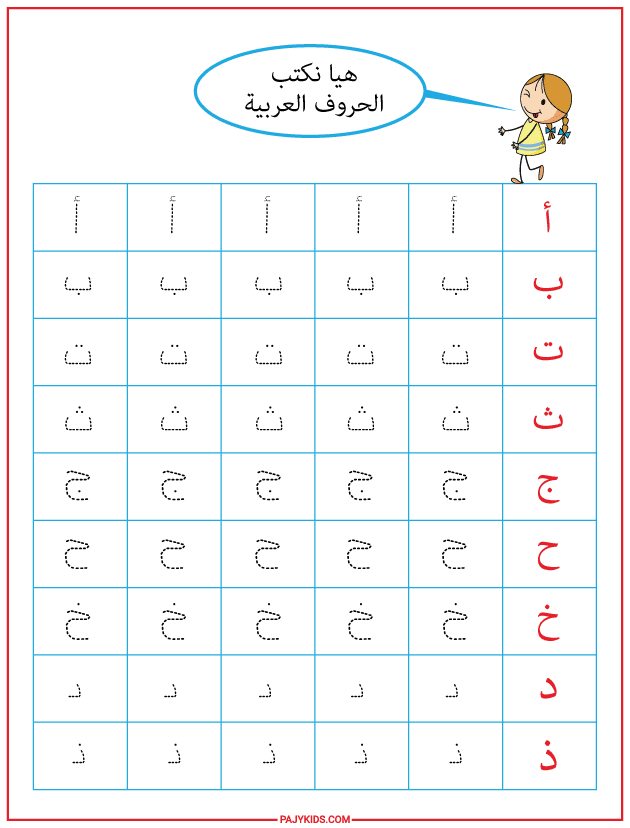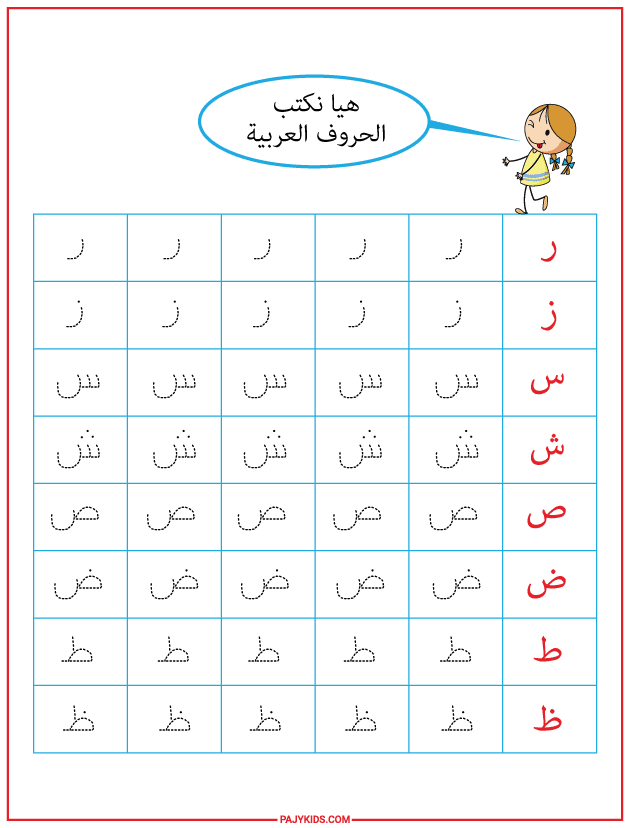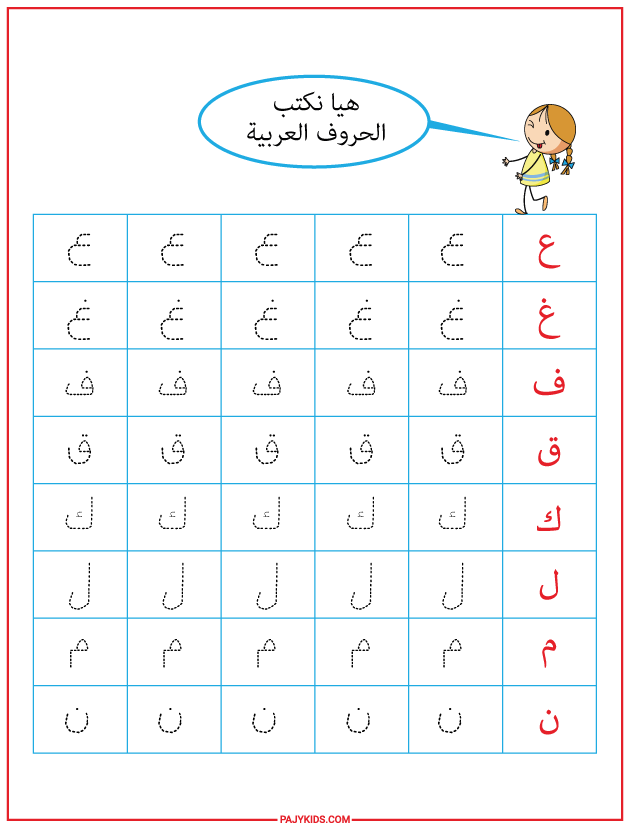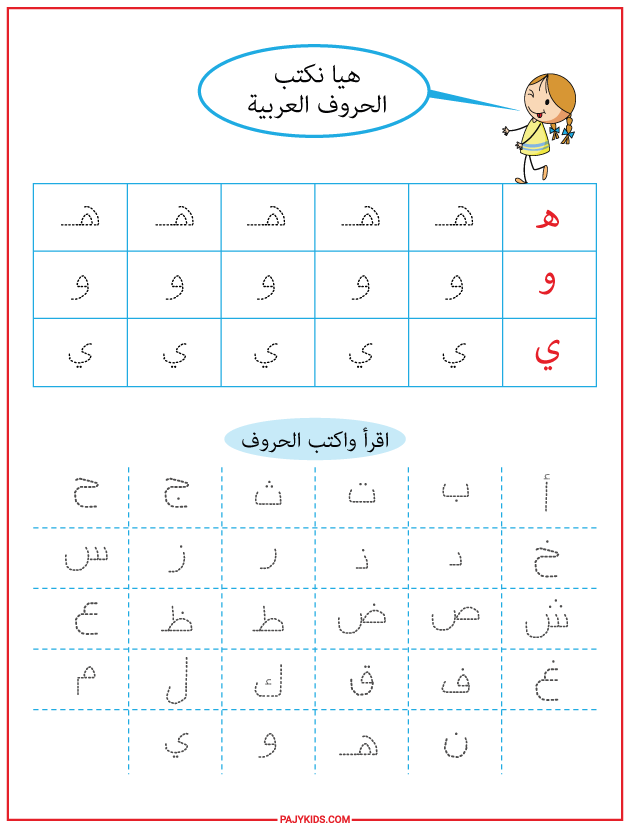Table of contents
Tracing activities focused on Arabic letter formation are essential for children in kindergarten, as they introduce young learners to the shapes and strokes of each letter in an engaging and accessible way. These activities support the development of fine motor skills by helping children gain control over pencil movement while following the lines of the Arabic letter. Through repeated tracing, children begin to memorize the structure of each letter, which is critical for early writing readiness.
In addition to motor development, Arabic letter tracing activities help children connect visual recognition with sound awareness. As they trace and repeat each letter aloud, they start to associate the shape of the Arabic letter with its phonetic sound, reinforcing both visual memory and auditory learning. This multi-sensory approach significantly enhances their ability to recognize and recall letters in reading and writing contexts.
These activities also promote a gradual and stress-free transition into more advanced language skills. When children feel confident tracing letters correctly, they are more likely to take initiative in independent writing. The repetitive structure of Arabic alphabet tracing gives them the practice they need while reducing anxiety and building self-esteem in their early literacy journey.
Moreover, Arabic alphabet tracing can be integrated into playful and creative themes, making the learning process enjoyable and relevant. Teachers and parents can use themed worksheets, interactive games, or storytelling that incorporates letter practice, turning each lesson into a meaningful experience. These methods not only keep children engaged but also deepen their connection to the Arabic language and its cultural richness.
Learn Arabic Letter Through Engaging Tracing Exercises

Fun and Effective Ways to Practice Arabic Letter Formation with Kids

Arabic Letter alphabet Tracing Worksheets for Preschoolers

Top Arabic Alif baa Tracing Activities
